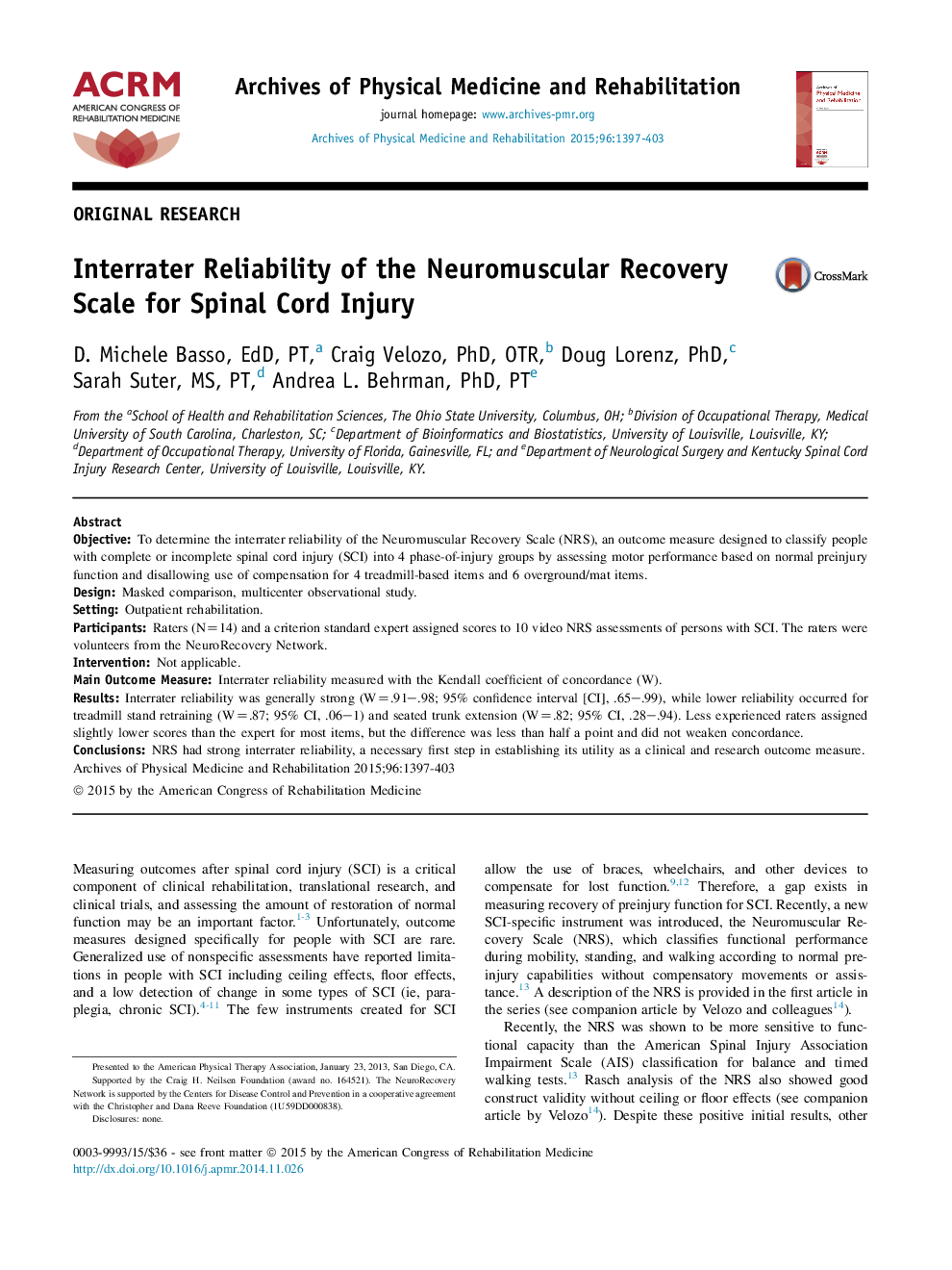| Article ID | Journal | Published Year | Pages | File Type |
|---|---|---|---|---|
| 3448294 | Archives of Physical Medicine and Rehabilitation | 2015 | 7 Pages |
ObjectiveTo determine the interrater reliability of the Neuromuscular Recovery Scale (NRS), an outcome measure designed to classify people with complete or incomplete spinal cord injury (SCI) into 4 phase-of-injury groups by assessing motor performance based on normal preinjury function and disallowing use of compensation for 4 treadmill-based items and 6 overground/mat items.DesignMasked comparison, multicenter observational study.SettingOutpatient rehabilitation.ParticipantsRaters (N=14) and a criterion standard expert assigned scores to 10 video NRS assessments of persons with SCI. The raters were volunteers from the NeuroRecovery Network.InterventionNot applicable.Main Outcome MeasureInterrater reliability measured with the Kendall coefficient of concordance (W).ResultsInterrater reliability was generally strong (W=.91–.98; 95% confidence interval [CI], .65–.99), while lower reliability occurred for treadmill stand retraining (W=.87; 95% CI, .06–1) and seated trunk extension (W=.82; 95% CI, .28–.94). Less experienced raters assigned slightly lower scores than the expert for most items, but the difference was less than half a point and did not weaken concordance.ConclusionsNRS had strong interrater reliability, a necessary first step in establishing its utility as a clinical and research outcome measure.
